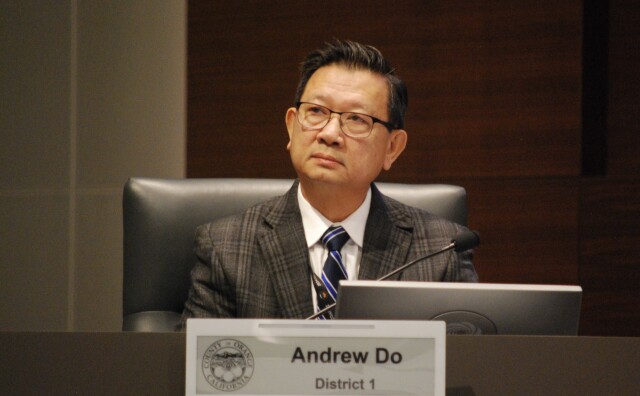Proposition 4 is a $10 billion bond to help the state pay for efforts to address the impacts of climate change, including boosting water recycling, flood control and wildfire and sea level rise protections.
Official title on the ballot: Proposition 4 — The Safe Drinking Water, Wildfire Prevention, Drought Preparedness, and Clean Air Bond Act
What the measure asks: Should the state be allowed to sell a $10 billion bond for natural resources and climate activities. Much of the bond money would be used for loans and grants to local governments, Native American tribes, not-for-profit organizations, and businesses. Some bond money also would be available for state agencies to spend on state-run activities.
-
A "yes" vote means the state can borrow $10 billion to fund various projects for conservation and responses to the causes and impacts of climate change.
-
A "no" vote means the state cannot borrow $10 billion to fund various projects for conservation and responses to the causes and impacts of climate change.
Understanding Prop. 4
The bond proposal comes amid worsening heat, flooding and fire that’s pushing aging infrastructure beyond its limits.
The history behind it
Democratic lawmakers and environmental advocates pushed for the bond after cuts to state climate programs due to an unprecedented deficit in recent years. (The nonpartisan Legislative Analyst’s Office says the state faces as much as a $73 billion deficit.)
Make It Make Sense: Election 2024 Edition
Two years ago, Gov. Gavin Newsom and the state legislature approved a $54.3 billion spending package for what Newsom called his “California Climate Commitment.” Since then, the package has faced a $9.4 billion, or 17%, reduction, due to the state’s budget deficit.
Programs to combat rising sea levels and extreme heat and help low-income Californians buy electric cars were among the cuts.
How it would work
Prop. 4 would have the state borrow $10 billion to pay for climate and environmental projects. Much of the climate bond money would go to infrastructure. It’s common for governments to take out long-term debt to pay for expensive infrastructure projects that will last for decades. Some of the funding would also cover administrative costs and salaries for workers involved in the funded projects.
-
City of Los Angeles
- City Council: Vote for districts 2, 10 and 14.
- Charter Amendment ER: A package of ethics reforms designed to fight corruption at City Hall. Plus: Charter Amendments DD, FF, HH and II.
L.A. County
- Board of Supervisors: Measure G would dramatically overhaul county government.
- District Attorney: Criminal justice reform, or more law-and-order justice?
- LA Unified school board: Voters are also deciding on a $9 billion facilities bond and a redistricting measure.
- School district measures: Schools have a lot of repair needs.
- Superior Court judges: Plus: Tips to make sure you're putting right person on the bench.
Statewide races
- Whoa! There are 10 propositions on the ballot. Here's your cheat sheet to Props. 2, 3, 4, 5, 6, 32, 33, 34, 35 and 36.
Jump to the full Voter Game Plan for dozens more races ▶
According to the Legislative Analyst’s Office, $3.8 billion would go toward safe drinking water and infrastructure to capture stormwater and recycle water; $1.95 billion to wildfire prevention and addressing the impacts of extreme heat; $1.9 billion to conserving natural lands, parks, and wildlife; $1.2 billion to help coastal communities adapt to sea level rise; $850 million for clean energy infrastructure, primarily offshore wind and upgrading electric transmission lines; and $300 million to incentivize more sustainable farming as well as support community gardens and farmers markets.
And 40% of the funds would be required to benefit lower-income communities most impacted by climate change and pollution. The measure also requires yearly audits.
What people who support it say
Dozens of conservation and environmental justice groups, as well as labor unions, renewable energy companies, and firefighter groups support the bond.
“Giving firefighters the tools to prevent wildfires is the best, most cost effective way to prevent the human and financial costs of these disasters. Prop. 4 makes the right investments to save lives and billions in response and recovery costs,” said Tim Edwards, president of Cal Fire firefighters' union, in a prepared statement.
Other supporters, including the Nature Conservancy, National Wildlife Federation, and the Community Water Center, say the funding is needed to shift from a reactive to a more proactive approach to the worsening impacts of climate change.
What people who oppose it say
Opponents include Senate Minority Leader Brian W. Jones, Assemblymember Jim Patterson and the Howard Jarvis Taxpayers Association.
They say the bond will only add to California’s worsening deficit and that the harm to taxpayers due to paying the bond back with interest outweigh the benefits. They argue the projects the bond proposes to cover are too ambiguous.
They also say many of the programs the bond would cover, such as clean water projects and necessary infrastructure investments, should be covered within the state budget, not with a bond that taxpayers will have to pay back with interest.
Cram session
During AirTalk's Ballot Cram Session live event, Larry Mantle talked with Caltech's Michael Alvarez, Pomona College's Sara Sadhwani and Claremont McKenna College's Zachary Courser about Proposition 4.
Potential financial impact
California taxpayers would pay the $10 billion bond back with interest. The Legislative Analyst’s Office estimates the cost to repay the bond would be about $400 million annually over the next 40 years, or about $16 billion in total.
The bond would likely reduce costs to local governments since more state money will be available.
The bond could also reduce costs of future disasters if infrastructure makes communities more resilient to those disasters, but those potential cost savings are uncertain.
Follow the money
Listen In: AirTalk tackles Prop. 4
Before you read more, we wanted to take a moment to tell you about our mission here at LAist, and why we're so dedicated to helping you get ready to vote.
In the lead-up to this important election, our hard-working reporters and editors spent hundreds and hundreds of hours researching and writing these detailed guides and fact-based resources. We invested that time because we're here to help you vote confidently and make your community a better place.
But we cannot do this essential work without your help. We rely on donations from readers like you to stay independent, which keeps our nonprofit newsroom strong and accountable to you.
At a time when the need for local journalism has never been greater, many newsrooms are facing cutbacks, including LAist. Member support — your support — is what will sustain a free press in Southern California.
LAist’s mission is to be here for you, so please be here for us now with a donation to power our trusted local reporting. Step up right now and make the choice to give. Because that’s exactly what it is — a choice. It's choice with consequences. If readers do not choose to step up and donate, the future of fact-based news in Southern California will not be as strong.
No matter what happens in the world, LAist will remain a voice you know and trust.
Thank you for your generous support.
Sincerely,
-
(she/her)

This voter guide originally published Aug. 30.








